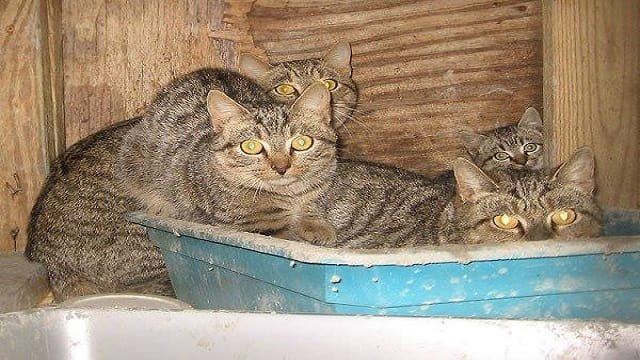For more than a century visitors have marveled at the Hermitage Museum’s precious collections, and for just about as long dozens of cats have prowled the Saint Petersburg palace’s sprawling cellars.
The felines has one main task – rodent control. The 70-odd brigade have their claws so deeply rooted into the history of Russia’s largest museum – and one of the world’s oldest – that there is even a special feline unit dedicated to their welfare.
“Our cats are as well-known as our collections,” said Irina Popovets, who runs the unit.
Every morning, art lovers from all over the world arrive at the gates of the Hermitage complex on the Neva River housing a collection that spans ancient Egyptian and Renaissance art to modern masters like Cezanne, Gauguin and Degas.
Meanwhile, 45-year-old Popovets heads down below to feed her purring army, a mixed batch of colors, breeds and temperaments who are always overjoyed and anxious to see her.
Some days, she brings along three assistants to help her vaccinate any new arrivals and treat the sickly ones.
As with humans, love and food alone are not always enough.
“Most of them are in bad shape,” Popovets admits, adding that many have been dropped off by people who can no longer take care of them.
Her office is located near the massive underworld inhabited by the cats and its walls are hung with portraits of these beloved animals.
“People very often discreetly bring us their cats,” she said, and the museum sometimes does struggle to keep the ever-expanding feline staff.
Cats first found a home at the Hermitage long before it became a museum open to the general public in the 1850s.
In 1745, Peter the Great’s daughter Empress Elisabeth issued a request ordering that “the finest cats of Kazan (a city on the Volga river) be found, the biggest, the ones best-suited to catching mice, so that they can be sent to Her Majesty’s court.”
By the time Catherine the Great took power in 1762, the felines had become official residents there. They were even dubbed the Winter Palace cats, after the royal residence that has now become a part of the museum.
They’ve even survived successive wars, the invasion by Napoleon’s forces and even the revolution that overthrew Tsarist rule.
The cats, however, did not make it during the 1941-1944 Nazi siege of Leningrad, the city’s name under Soviet rule. The city’s famished population were forced to eat all their pets in order to survive.
Legend has it that the palace’s feline guard was brought back to life when World War II had ended, when new recruits were brought in from all over Russia.
By the 1960s, there were so many cats at the Hermitage that the authorities decided it would be best to just simply abandon them.
Yet the rat population proliferated and a few years later the cats again found their place there.
Though they are no longer allowed into any of the museum’s 1,000 halls showcasing more than 60,000 masterpieces, it is said that the cats have won the fight against the rodents.
And they have become celebrities in their own right, hugely popular with some three million tourists who visit each year and snap up souvenirs and postcards adorned with cat pictures which are on sale in the museum’s shops.
“Given the Hermitage cats’ popularity, we have decided to kick-start a process to copyright their name,” museum director Mikhail Piotrovsky stated.
There is even an annual holiday event in the felines’ honor once a year, as well as a website inviting residents of Saint Petersburg to adopt one.
Popovets picks up her office phone to answer queries from a man interested in adopting a kitten whose picture he has seen online.
“You’re right, it is an honor to adopt a Hermitage cat,” Popovets tells him.









